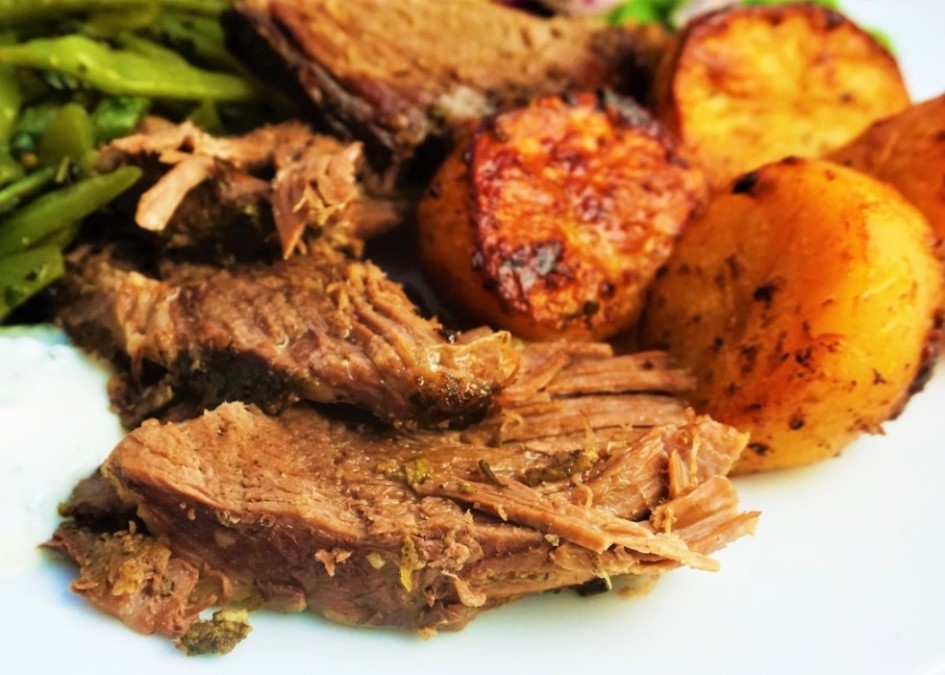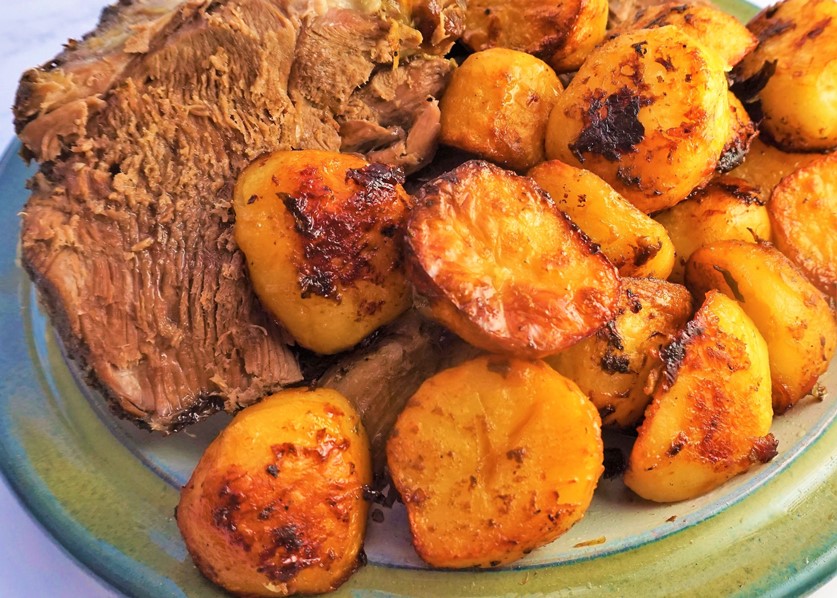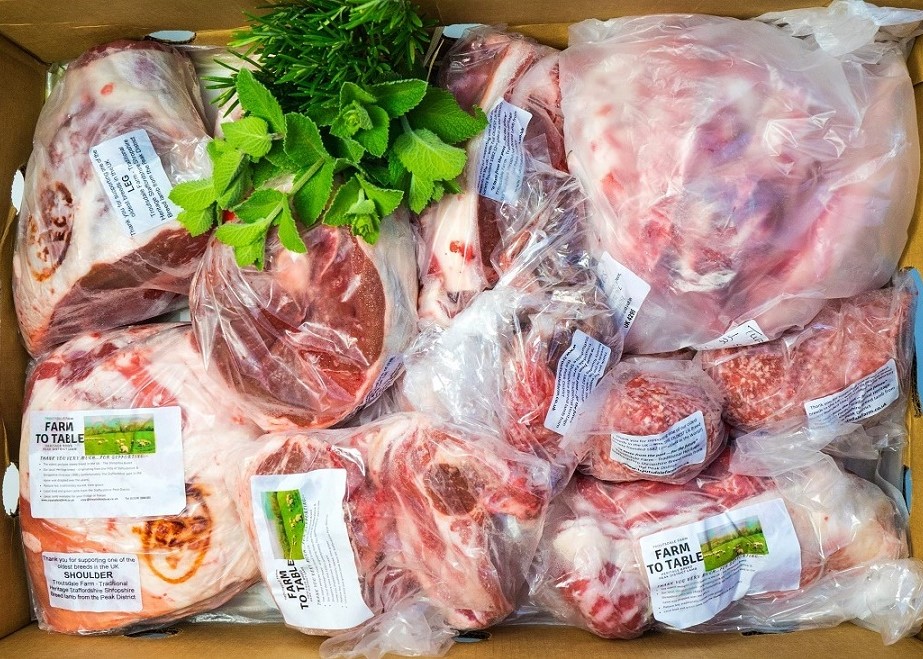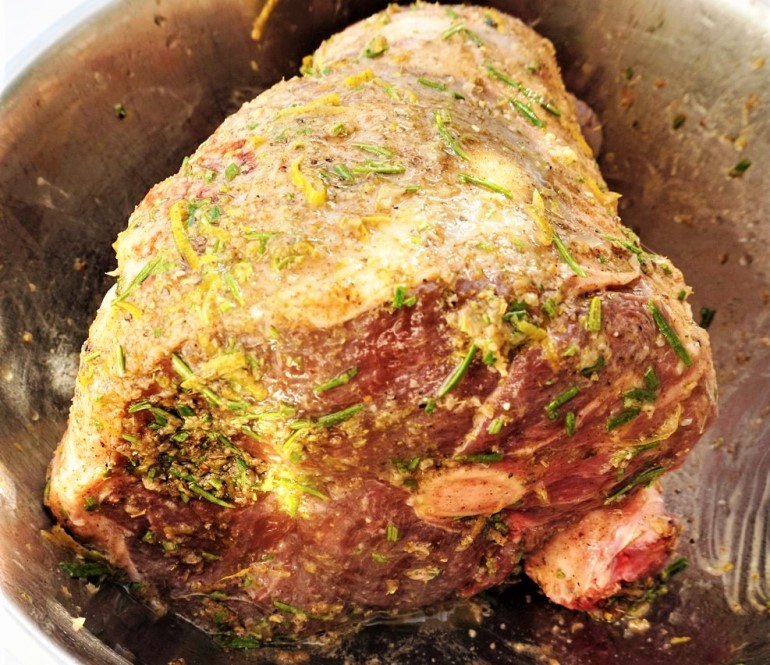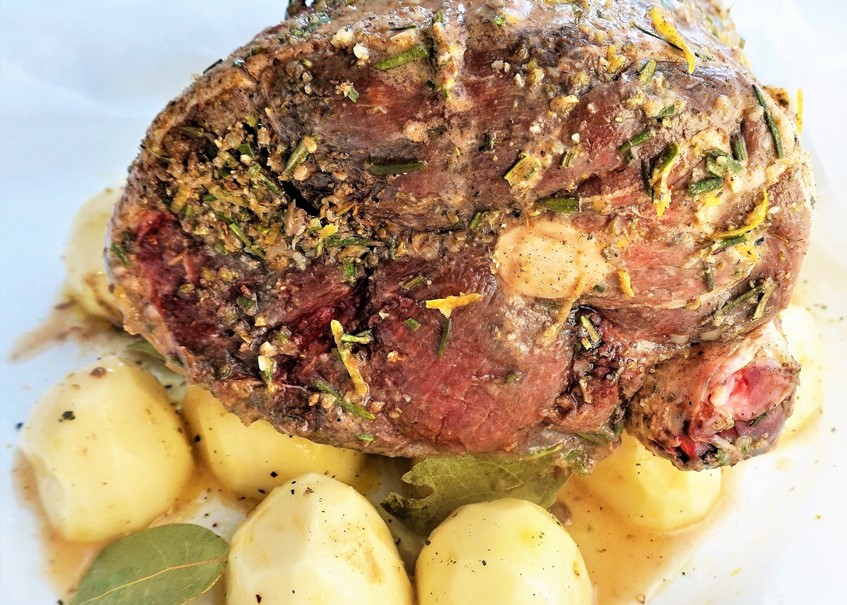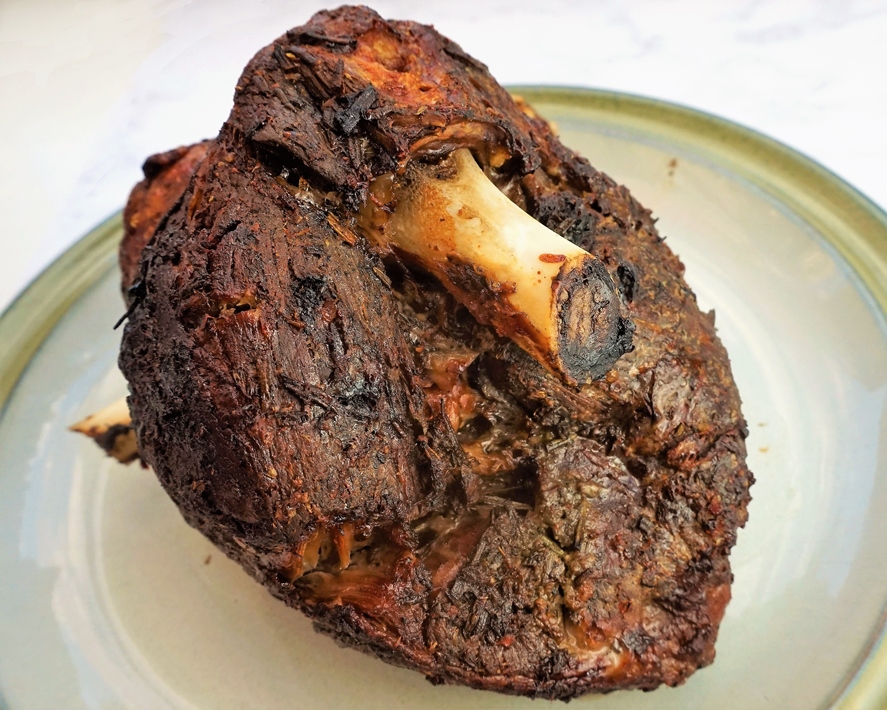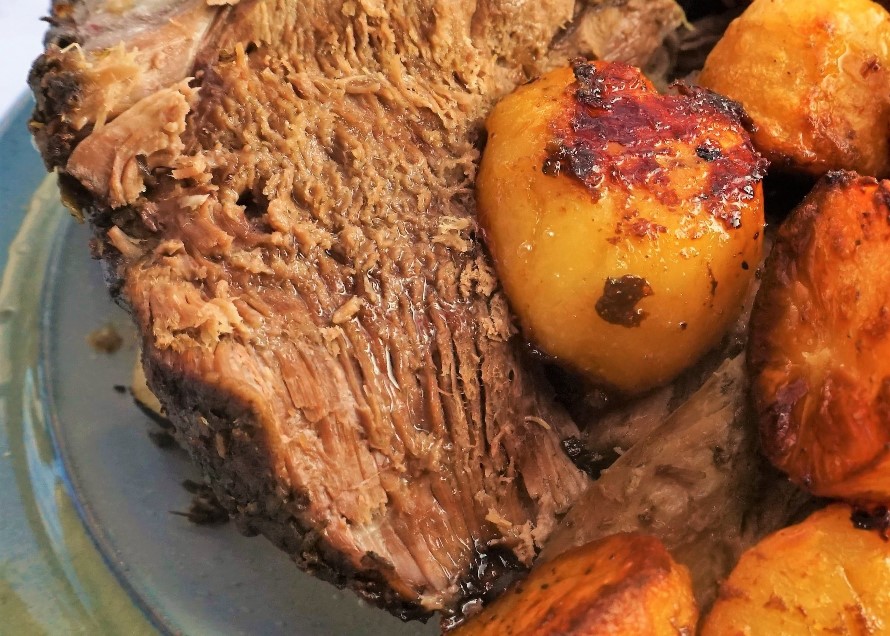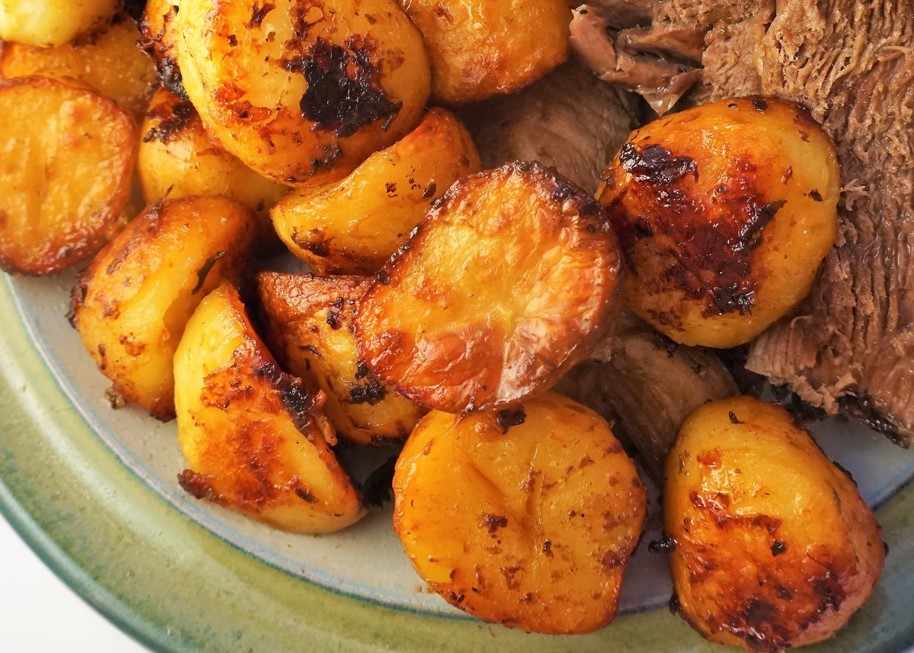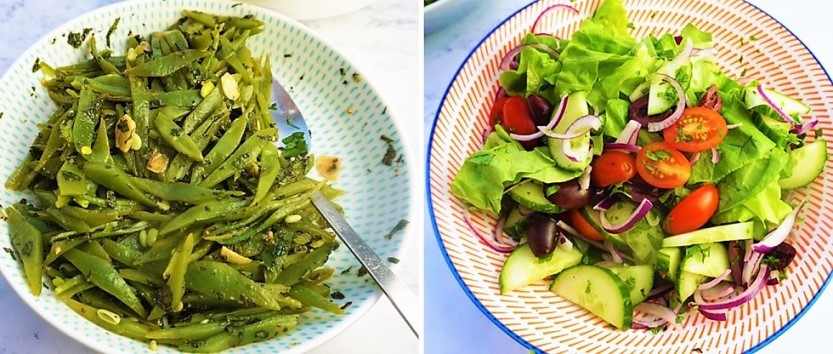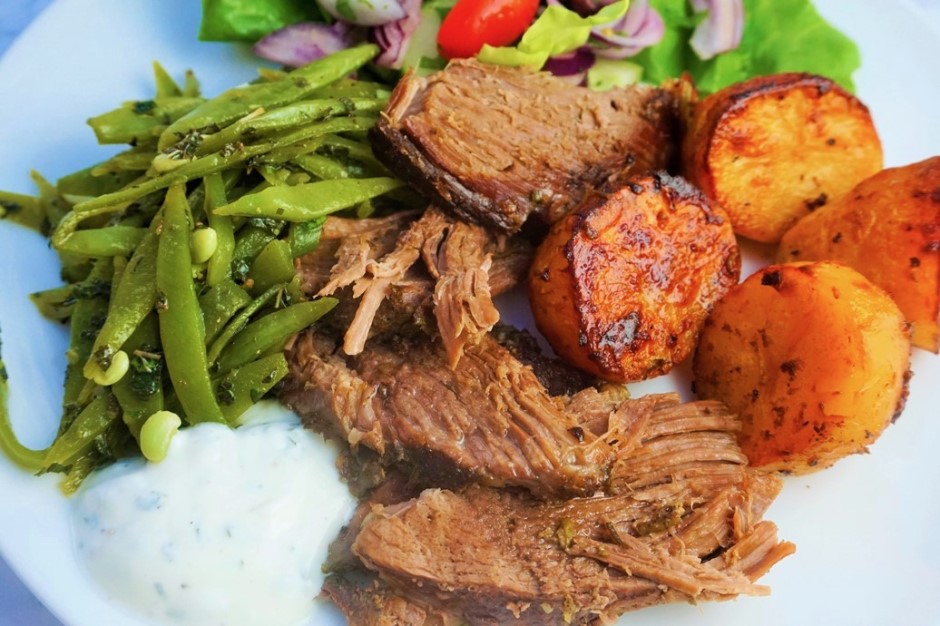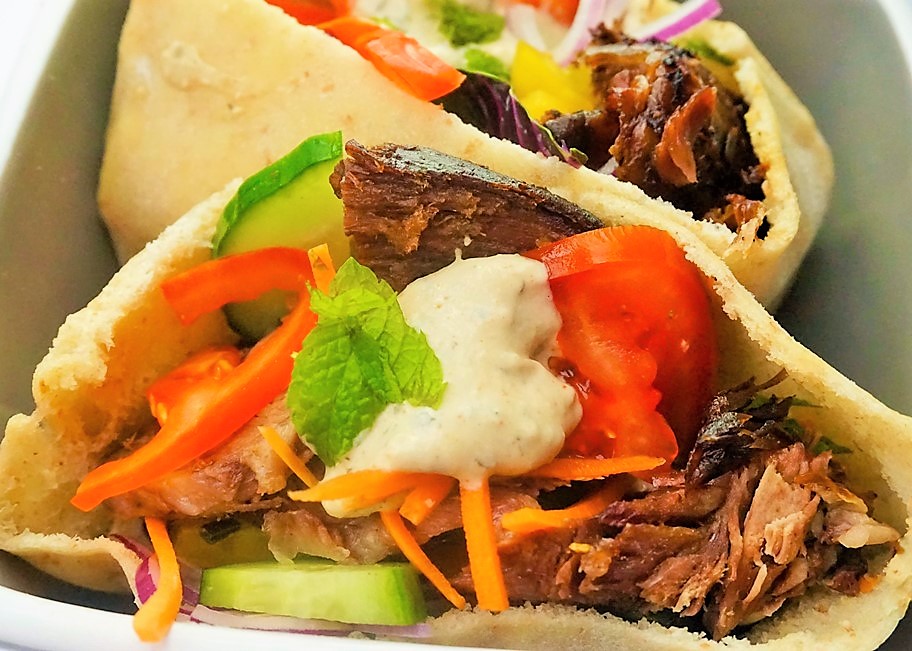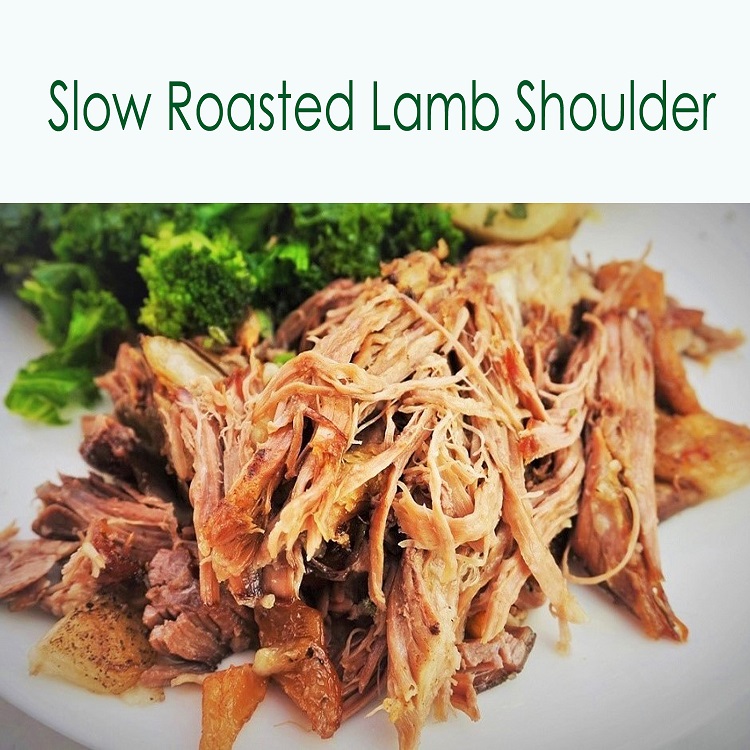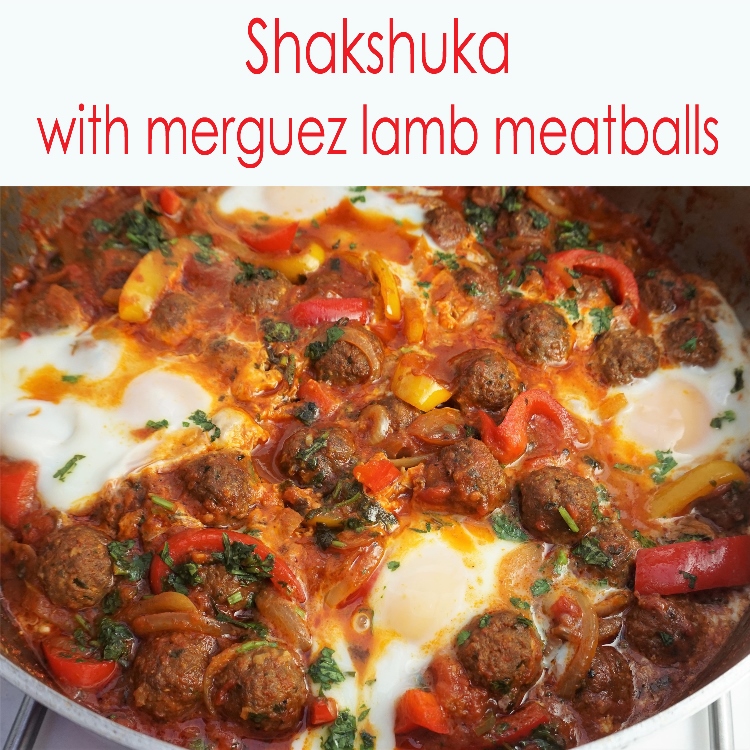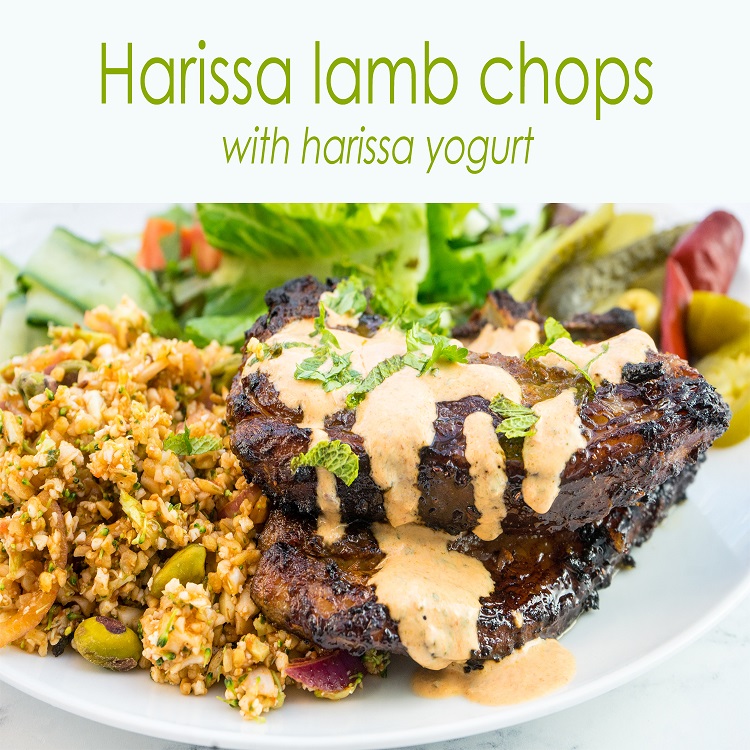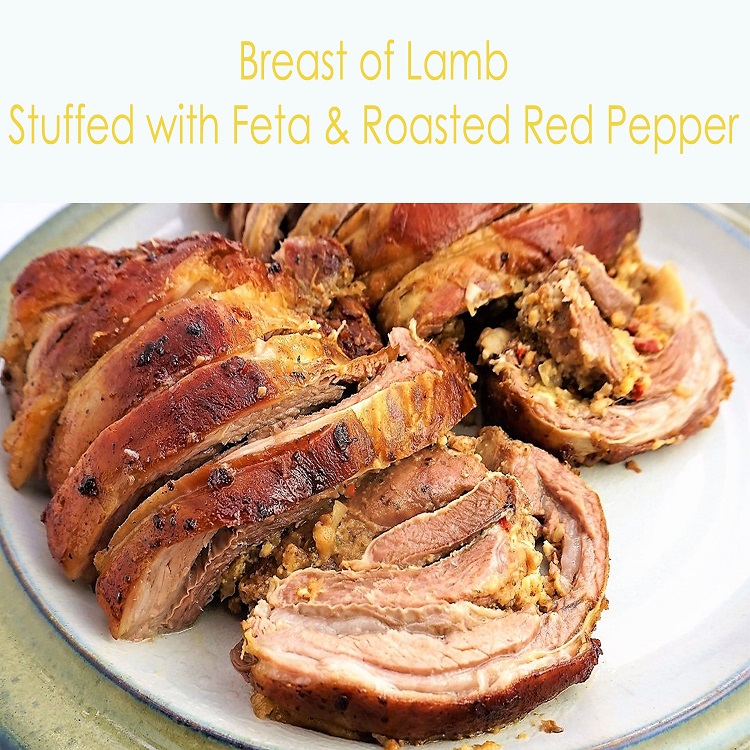Kleftiko: Greek style lamb & potatoes
Kleftiko is a traditional and delicious Greek lamb dish. Marinated overnight then slow-cooked, the lamb is fabulously moist and tender. Cook potatoes underneath the lamb and you’ll get the best roast potatoes ever. And the great news is, kleftiko is dead easy to make as time does most of the work.
THE ORIGINS OF KLEFTIKO
The story goes that kleftiko takes it’s name from the Klephts or Kleftes. The Klephts were a group of bandits who fought Ottoman rule in Greece between the fourteenth and nineteenth centuries . It’s said that, living in the mountains, the Klephts would steal sheep and cook them in underground pits. The idea was that the smoke and aroma wouldn’t be detected. The Greek word kleftes means thieves (think kleptomania), hence kleftiko.
However, neat as that story sounds, I’m afraid I don’t buy it. Burying meat in earth pits must have been one of the most ancient cooking methods. Archeologists have found evidence of it all over the place, going right back to the Bronze and Iron ages. I don’t doubt that’s how the Klephts cooked their lamb, but I bet every other Greek, and Ottoman Turk, did the same.
ALMOST EFFORTLESS
Anyway, you’ll be pleased to know there’s no digging of pits in this Kleftiko recipe. To trap all those juices and aromas, you’ll need do nothing more physically demanding than breaking out the kitchen foil and parchment paper.
What you will require is patience. You need to cook the lamb long and slow – around four or five hours. But there’s virtually nothing for you to do during that time. So relax or rustle up some tasty salads and side dishes to go with the tender, juicy meat.
This version of Kleftiko cooks potatoes along with the lamb and I really recommend this. Sitting them in the lamb juices and finishing at a high heat to crisp up, gives an incredible roasted potato.
THE LAMB
For my Kleftiko I used a half leg of lamb, but you could use a whole leg. A shoulder would also be good, and has the advantage of being a little cheaper.
I recently bought a lamb box, containing half a butchered lamb. It was mature lamb, sometimes called hoggett, which is between one and two years old. Bought fresh and frozen at home, it’s been a real boon to have so many different cuts on hand to cook whatever lamb dish I fancy.
If you don’t want a whole lamb box, share it with a friend. Big joints like leg and shoulder are cut in two, making it easy to divide up. I think it’s a great, economical way to buy lamb and you can support local family farms too.
My lamb came from Troutsdale Farm in the Staffordshire Moorlands, where I live. The lamb produced at Troutsdale is very special as its from Shropshire breed sheep. Shropshires are a traditional British breed producing rich, succulent meat. At Troutsdale they’re raised naturally and grass fed, and the lamb is excellent to cook with.
CLICK HERE TO READ MY POST ABOUT TROUTSDALE FARM’S SHROPSHIRE BREED LAMB
MARINADE: OVERNIGHT IS BEST
To achieve the best flavour, get organized and marinade the lamb overnight. Some say a shorter marinade or even no marinade will do. Personally, I think if you can’t give it three or four hours minimum, then save this recipe for another day.
The marinade itself can be made in a flash. It’s just garlic, rosemary, oregano (I prefer dried oregano to fresh), lemon zest, salt and pepper, all bashed together. Use a pestle and mortar, a knife, or whizz in a blender.
Next, you add lemon juice and olive oil before spreading the marinade over the lamb. Stabbing little holes first, then pushing the marinade deep inside will distribute the flavours even more.
All you do then is cover, put in the fridge and leave until you’re ready to cook.
SLOW-COOKING THE LAMB & POTATOES
To mimic cooking the meat underground, it’s sealed it in a parcel of foil and baking parchment or grease proof paper. This is done by laying two long pieces of foil, one horizontally and one vertically in a large roasting tin, then laying over grease proof paper in the same way. To create a parcel, you bring the sides up and scrunch the edges together to seal it.
For me, equally good as the lamb in Kleftiko, are the potatoes that are cooked along with it. They sit, a few bay leaves tucked among them and with the marinading liquor poured over, underneath the meat. This means they get to soak and bathe in all the lovely meat juices.
When you’ve made your parcel, all you do then is put the whole lot in the oven and leave for four and a half hours. Simple. Actually, if your joint is at the low end of the weight range shown in the recipe card, check how it’s doing after three and a half hours.
You can tell when the meat’s done as you’ll easily be able to pull some away from the bone with a fork. If you can’t do that, reseal the parcel and give it another 30 minutes before checking again. When the meat’s ready, I like to turn the oven up and brown it, uncovered, for a ten minutes or so, before leaving in a warm place to rest.
As you can probably see from the images above and below, although I like the outside of my slow-cooked lamb to be crusty and well browned, inside it should still be tender and juicy.
FINIISHING THE POTATOES
While the meat’s resting, it’s time to finish off those glorious potatoes. Depending how you like them, they’ll need another 25 – 45 minutes to crisp up. Their bottoms will have been sitting in the lamb’s cooking juices for a good while, so I like to turn them over a few times to even out the cooking. The result is a golden potato that’s beautifully soft inside, flavoured with herbs, lemon and meat juices. The exterior is caramelized with a sweetish, citrussy taste.
SERVING THE KLEFTIKO
Once the lamb’s rested and your potatoes are done, carve the meat. I prefer it in chunky slices. If there’s still juices in the roasting tin after finishing off the potatoes, I spoon some of it over the lamb.
Alongside Kleftiko, I like to serve lots of vegetables and salad. I think their freshness balances the rich, slow-cooked flavours of the lamb and potatoes. It’s always good to have different textures on a plate too.
I love runner beans and we grown some in our garden every year. To accompany this Kleftiko I made a salad of cooked and cooled beans mixed with a minty vinaigrette and fried garlic slices. I used the cooled olive oil from frying the garlic to make the vinaigrette along with red wine vinegar.
I also served a simple Greek-style salad of tomatoes, olives and cucumber, red onion and lettuce with an oregano-flavoured vinaigrette. With some minted yogurt on the side, this made a stunning plate of food.
I think the meaty, herby flavours of the lamb and lemony potatoes are a great combination with the salads; satisfying but much lighter than a traditional roast.
While Kleftiko isn’t a dish you can make on the spur of the moment, it doesn’t take much effort other than forward planning. Get your lamb in its marinade on Saturday and pop in the oven Sunday morning or afternoon and you’ll have a feast for lunch or dinner.
Leftovers are really good too and can be frozen. Here, I served lightly warmed Kleftiko in a homemade pitta stuffed with crunchy salad and a minty tahini-yogurt. If you’ve some of the potatoes left (we ate all ours) then tuck a few slices in the pitta too.
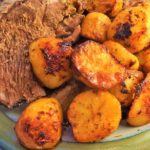
Kleftiko: Greek style lamb & potatoes
An easy and delicious Greek lamb dish. Marinated overnight then slow-cooked, the lamb is fabulously moist and tender. Cook potatoes underneath the lamb and you’ll get the best roast potatoes ever.
Ingredients
- 4-6 cloves garlic peeled
- 1 tsp salt
- 1-2 tbsp rosemary leaves chopped
- 2 tsp oregano
- 2 small lemons, zest & juice
- freshly ground black pepper
- 3 tbsp olive oil
- 1.5 - 2 kg lamb leg (or shoulder, or half leg or shoulder)
- 1 kg potatoes peeled, halved or quartered if large
- 4-6 bay leaves
Instructions
The day before cooking: marinade the lamb
-
Make the marinade: Using a pestle and mortar, crush the garlic with the salt (or use the flat side of a knife). Add the chopped rosemary, oregano, lemon zest and black pepper. Bash together to form a rough paste. Stir in the lemon juice and olive oil.
-
With a sharp knife, make small incisions all over the lamb, then pour over the marinade. Using your hands, spread the marinade over the meat and into the incisions. Cover and refrigerate overnight.
On the day of cooking
-
Preheat the oven to 160C / 140C fan. Remove the lamb from the fridge.
-
Take a large roasting tin and lay a piece of foil, approx twice the length of the tin, horizontally across it. Take another long piece of foil and lay it vertically across the first.
-
Take two large pieces of parchment or greaseproof paper and lay these, one horizontally, one vertically, over the foil.
-
Put the potatoes in the prepared tin. Season with salt and pepper and tuck the bay leaves among them.
-
Pour the marinade from the lamb over the potatoes.
-
Sit the lamb on top of the potatoes then bring the foil and paper up and around to cover the meat. Scrunch the foil and paper together to form a parcel. Use extra foil to cover any gaps if necessary.
-
Put in the oven and cook for 4.5 hours. If your lamb is at the lower end of the weight range suggested, then check if the meat is cooked after 3.5 hours.
Tip: the meat is cooked when it's very soft and you can easily pull away some of it from the bone using only a fork.
-
If the lamb is not yet cooked, reseal the parcel and give it another 30 minutes before checking again
-
When the meat’s done, tear the sides away from the parcel, baste the meat and increase the oven temperature to 220C (200C fan). Cook for a further 10-20 minutes until the lamb is browned to your liking.
-
Take the lamb from the baking tin, wrap in foil and keep it warm.
-
Turn the potatoes over, return them to the oven and continue roasting until they are fully cooked through, golden and crispy (25-45 minutes).
-
To serve: carve the meat and serve with some of the cooking juices poured over, alongside the potatoes.
Accompany with vegetables, salads and minted yogurt if liked.
Recipe Notes
Recipe adapted from BBC Good Food.
IF YOU ENJOYED THIS RECIPE YOU MIGHT LIKE:

